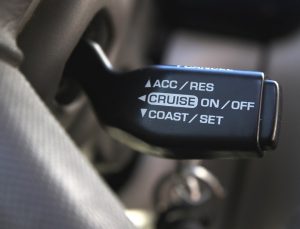How Does Cruise Control Actually Work?

If you’re on the expressway heading from Hamilton to Cambridge, or just crawling along Te Rapa Road in peak hour, having cruise control that works can make the drive way easier. Just flick it on and your car keeps speed for you. No more trying to hold the accelerator steady through all those damn speed cameras or endless 50km/h stretches in Hamilton East.
Most of the late-model Toyotas (Corollas, Highlanders), Subarus, Mazdas and European stuff like Skoda Octavias and even the odd Volvo we see all have cruise. Some of the newer ones even keep a safe gap in stop-start traffic, which is a life-saver on those foggy winter mornings on the way out to Morrinsville or standing still on Avalon Drive when someone up ahead’s crashed into a traffic island again. That’s adaptive cruise control – pretty flash, really.
The Guts of Cruise Control: What Sort Have You Got?
Now, not all cruise systems are the same. In a 2020 Nissan Qashqai or Kia Sportage, the cruise gets handled by the car’s computer – the ECU. When you set a speed, the ECU reads what’s happening (throttle, speed sensors) and keeps you at your chosen pace, using a “drive-by-wire” setup. Super common in anything from a new Suzuki Swift to a VW Golf.
If you’re driving something older, like a late 90s Honda Accord or those early Hyundai Sonatas, it’s probably an electromechanical setup. These use a vacuum actuator hooked to your throttle. Works alright, but it’s a bit old-school, and we see heaps of issues with worn out vacuum lines or dodgy sensors in these. Still, gets the job done on open road runs out to Ngaruawahia or Raglan.
Why’s My Cruise Control Not Working?
We get people popping in all the time – not just blokes, plenty of busy women doing school runs between Hamilton and Rototuna too. Common issues we see?
Blown fuse: Bit of a classic. If the cruise fuse packs up, forget about cruise control. Only takes a minute to check in most Mazdas, but a right pain in the BMWs with their fancy fuse boxes.
Stuffed speed sensor: If you’ve got a Hyundai i30 that suddenly won’t keep speed down SH1, often the speed sensor’s packed a sad. Without that, cruise won’t know how fast you’re going.
Brake issues: Brakes aren’t just for stopping. If the brake light switch under your pedal is out (happens in heaps of VWs, Suzukis, even the odd Ford Ranger), cruise won’t switch on at all… or it won’t cancel when you tap the brake – which can be properly dangerous.
ECU or actuator drama: A modern Euro car like a Peugeot 308 might have a fried ECU (costs a bit to sort, but we can test before you panic). For older Toyotas or Mitsis, the vacuum actuator cable or hoses can get manky and split – then you lose cruise until they’re sorted.
Dirty or damaged throttle control or sensor: You’d be surprised how much gunk collects on the throttle body or the sensors go out of adjustment, especially if the car’s mostly slugging through Rotokauri’s stop/start traffic, or after a muddy weekend in Te Awamutu. When the sensors don’t match up, cruise stops working, or worse, hunts up and down speed like it’s had too many coffees.
Is It Safe to Keep Using Your Car?
If cruise control’s not playing ball, don’t use it – but the car’s usually fine to drive otherwise. A dodgy cruise can be a sign something bigger’s up though, like brake or throttle problems. And with the all the potholes cropping up in Chartwell and Dinsdale, you really want your brakes and throttle sweet. So if your cruise stops working, it’s worth booking in for a check. Got a WOF due? Good time to get everything checked at once.
Need Your Cruise Control Fixed in Hamilton?
We sort these faults all the time at Grimmer Motors, whether it’s a Hyundai Tucson with a dead fuse or a well-used Mercedes with a stubborn throttle sensor. No job’s too odd. Our technicians can check your system, track down the problem and swap out the dud bits – so you, your family, and everyone else sharing Morrinsville Road is safer.
After quick, reliable cruise control inspection or parts replacement in Hamilton? Book Now

